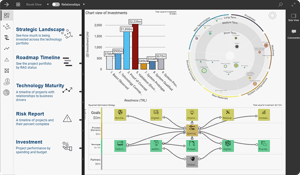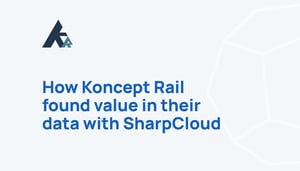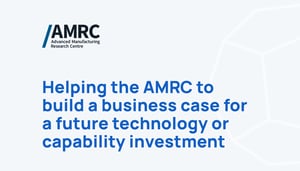

Bringing clarity to complex benefit management at Network Rail
Case Study
Bringing clarity to complexity
Network Rail wanted our help to effectively manage and communicate the benefits value and realization of their involvement in the Department for Transport (DfT) TIES Living Lab programmes helping to drive smarter transport infrastructure. The aim was to create multiple dynamic benefit maps with visual depictions of the outputs being delivered, bringing clarity and highlighting the real business benefits of the programmes. Using SharpCloud they developed a portfolio set of digital benefits maps and dashboards which help explain the complex programmes, by demonstrating the magnitude of the task and simplifying the understanding.
.jpg?width=300&name=Website_CustomerReview.v3(optimized).jpg)
"The portfolio dashboard provides a digital and interactive view of the benefit maps allowing instant interrogation of benefit data through multiple views and the ability to isolate relevant information."

Network Rail's objectives
Digitize benefit maps to demonstrate benefit realization
Network Rail utilized SharpCloud to track their outputs being delivered and what those outputs mean by way of increased capability and outcomes. These highly visual, live, and collaborative benefit maps ensure value is easily identified and understood by stakeholders, enhancing clarity across the benefits landscape.
Utilizing SharpCloud for benefit realization, Network Rail are now able to see which projects are adding value or if the value is unclear, project budgets, and associated costs. Through engaging views and panels, SharpCloud provides an information-rich platform that informs effective investment decision-making, offering a comprehensive overview of project performance.
Network Rail aligned their stakeholders, from C-suite down to individual team members, by using SharpCloud's dynamic software which enabled live and interactive interrogation of reporting data meaning all users could drill down to the information they required and focus in on highlighted key insights and emerging themes.

Where we are now and what the future holds
SharpCloud's benefit maps provide Network Rail with the information and insight they need for effective investment decision making, and aligns with the wider Network Rail strategy so all stakeholders can see the corporate objectives they are pushing towards. Tracking progress and demonstrating benefits realization can be reported with confidence, knowing that data in SharpCloud is always up to date.

.png?width=300&name=Benefits%20Realization%20Radar%20(2).png)
Why use SharpCloud
- Cut through the complexity of your benefits landscape to inform better decision making with a SharpCloud dashboard that enables live interrogation of your data, isolates relevant information, and highlights emerging themes.
- Align your teams and stakeholders across the business and get everyone moving in the same direction. SharpCloud provides a high-level overview which is easy-to-understand by everyone, whilst also allowing drill-down into specific projects, tasks, goals, and more for individual teams.
- Map out how your data is interrelated in SharpCloud - whether it's how benefit maps link to your overall corporate objectives or how risks impact projects, SharpCloud's live data relationships ensure information is always correct, bringing clarity to complex programmes.
- SharpCloud improves efficiency and saves business time with it's ability to connect to existing systems and data sources to automate processes. By establishing an interface between their datasets and the SharpCloud benefits dashboard, Network Rail are able to automate the benefits realization management reporting which saves time and reduces human error.
Other Case Studies
Discover how our customers are solving their business challenges using SharpCloud
.jpg?width=300&name=Website_GeneralCTA.v2(optimized).jpg)
-1.png?width=300&name=MicrosoftTeams-image%20(68)-1.png)


